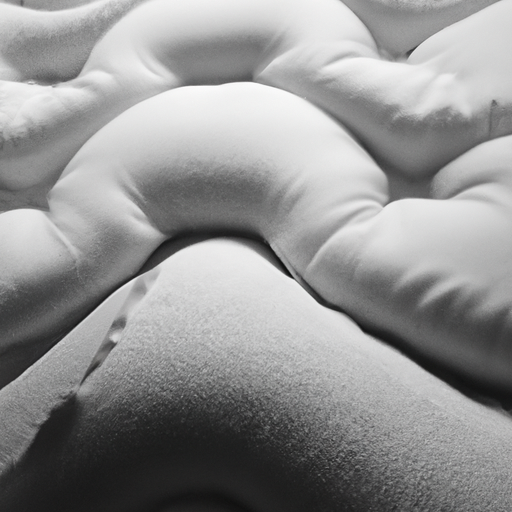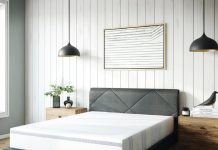Looking to keep your mattress in top-notch condition? Well, you’ve come to the right place! Today, we’re here to help you understand the key differences between two essential bedding accessories: a mattress pad and a mattress protector. Both of these items play a crucial role in enhancing your sleep experience and safeguarding your mattress against wear and tear. Whether you’re looking to add an extra layer of coziness or provide an extra shield against spills and stains, read on to discover which option suits your needs best.
Review contents
Definition of Mattress Pad
A mattress pad is an additional layer of padding that is placed on top of a mattress to provide extra comfort and support. It is typically made of quilted fabric and is designed to cover the entire surface of the mattress. Mattress pads are available in various thicknesses and materials, allowing individuals to choose the level of softness and cushioning that suits their preferences.
Common Materials Used for Mattress Pads
Mattress pads are usually crafted from a variety of materials, each offering its own unique benefits. One common material used in mattress pads is cotton. Cotton pads are known for their breathability, softness, and hypoallergenic properties. Another popular material is memory foam, which conforms to the body’s shape and provides excellent pressure relief. Some mattress pads may also feature polyester fillings for added plushness, while others may be made from natural materials like bamboo or wool.
Types of Mattress Pads
There are several types of mattress pads available on the market to cater to different needs and preferences. One type is the hypoallergenic mattress pad, which is designed to protect against allergens such as dust mites, pet dander, and pollen. These pads are often made with tightly woven fabrics that prevent the entry of allergens into the mattress. Another type is the cooling mattress pad, which incorporates advanced cooling technologies to regulate body temperature and promote a more comfortable sleep environment. Additionally, there are waterproof mattress pads that provide a protective barrier against spills, stains, and moisture damage.
Functions of a Mattress Pad
A mattress pad serves multiple functions that enhance the overall sleep experience and prolong the life of the underlying mattress. Firstly, it adds an extra layer of cushioning and softness, making the sleeping surface more comfortable. This is especially beneficial for mattresses that are too firm or lack adequate padding. Secondly, mattress pads help to regulate body temperature by providing additional insulation or cooling properties, depending on the type of pad chosen. Thirdly, they act as a protective barrier, preventing stains, dirt, and sweat from reaching the mattress, thereby extending its lifespan. Lastly, mattress pads can also reduce the transfer of motion between partners, ensuring minimal disturbances during sleep.
Benefits of Using a Mattress Pad
Using a mattress pad offers several advantages that contribute to improved sleep quality and mattress maintenance. Firstly, it provides an affordable solution for individuals who want to modify the feel of their mattress without investing in a new one. By simply adding a mattress pad, one can achieve the desired level of comfort and support. Secondly, mattress pads are easy to maintain and clean. Most of them are machine washable, allowing for convenient maintenance and hygienic sleep environment. Furthermore, mattress pads can help protect the mattress from spills, stains, and general wear and tear, saving us the cost of replacing the entire mattress. Finally, certain mattress pads offer specific benefits such as allergen protection or temperature regulation, which can greatly enhance the overall sleeping experience and promote better health.
Definition of Mattress Protector
A mattress protector, also known as a mattress cover, is a removable bedding accessory that safeguards the mattress from spills, stains, bed bugs, allergens, and other potential damages. It is usually made of a waterproof or water-resistant material, enveloping the entire mattress like a fitted sheet. Mattress protectors are specifically designed to provide a barrier between the mattress and any external elements that may cause harm or compromise its longevity.
Common Materials Used for Mattress Protectors
Mattress protectors are typically constructed using materials that offer a combination of protection, comfort, and durability. The most common material used for mattress protectors is vinyl or polyurethane, which provides an impermeable layer that effectively repels liquids and prevents stains from seeping into the mattress. Some mattress protectors also feature cotton or polyester fabrics on the surface for added breathability and comfort. These materials are soft, hypoallergenic, and create a comfortable sleeping surface while still providing waterproof protection. Additionally, certain mattress protectors may incorporate advanced technologies such as bamboo or microfiber to further enhance their protective and hypoallergenic properties.
Types of Mattress Protectors
Mattress protectors come in various types to cater to different needs and requirements. The most common type is the waterproof mattress protector, which is designed to shield the mattress from spills, sweat, and accidents that can cause stains or odors. Waterproof protectors are particularly valuable for households with children or pets, as they offer reliable protection against unexpected messes. Another type is the allergen-proof mattress protector, which is specially designed to prevent allergens such as dust mites, pet dander, and pollen from entering the mattress. These protectors use tightly woven fabrics and advanced barrier technologies to create a shield against allergens. Additionally, there are also cooling mattress protectors that incorporate materials or technologies that dissipate body heat, promoting a cooler and more comfortable sleep environment.
Functions of a Mattress Protector
The primary function of a mattress protector is to safeguard the mattress from damage and extend its lifespan. By acting as a barrier, it prevents spills, stains, sweat, and other liquids from penetrating into the mattress, thus keeping it clean and hygienic. This protection is particularly valuable for keeping the mattress free from allergens, allergenic particles, and dust mites that can trigger allergies or respiratory issues. Additionally, mattress protectors help to prevent bed bugs from infesting the mattress, as their smooth and waterproof surfaces make it difficult for bed bugs to find hiding spots or access the mattress. By offering these protective functions, mattress protectors ultimately save us the trouble and cost of dealing with stains, odors, allergens, and potential infestations.
Covering the Entire Mattress
Both mattress pads and mattress protectors are typically designed to cover the entire surface of the mattress for maximum protection and coverage. This ensures that the mattress is fully shielded against spills, stains, allergens, and other potential damages. By enveloping the entire mattress, these bedding accessories create a barrier that extends from the top surface to the sides, preventing any external elements from compromising the integrity of the mattress. This coverage not only provides comprehensive protection but also allows for a seamless and secure fit. Whether it is a mattress pad or a mattress protector, choosing a size that matches the dimensions of the mattress ensures that it stays securely in place and does not shift or bunch up during sleep.




















